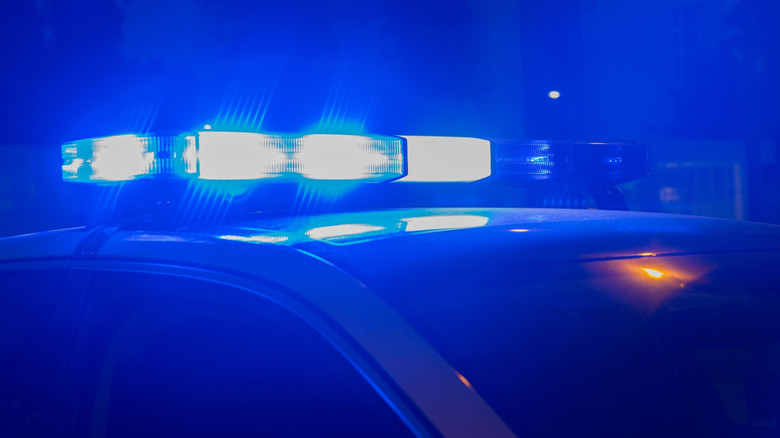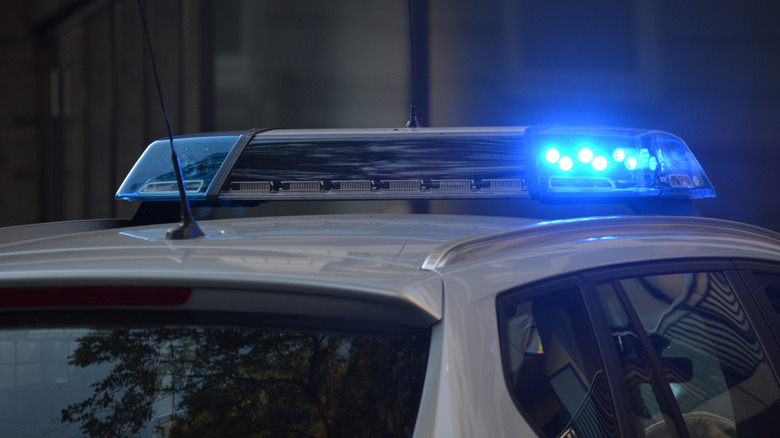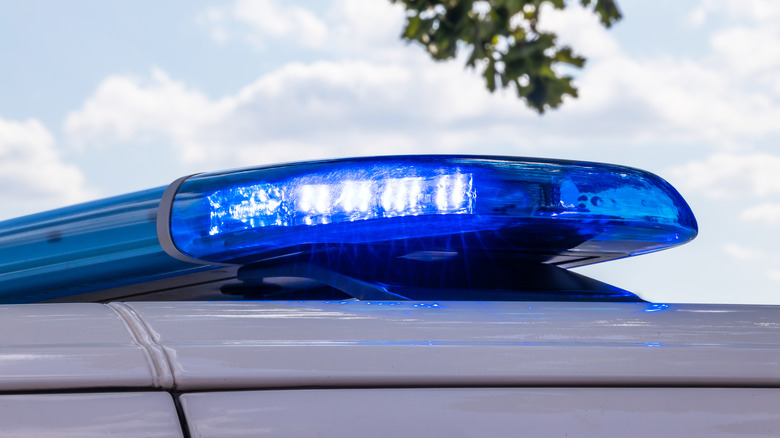What Does A Solid Blue Light Mean On A Police Car?
Police cars have various lights they use to communicate with others on the road, but at times it can be hard to tell what exactly they're conveying. Red and blue flashing lights are standard and we know that signifies an emergency, but if a police car has flashing yellow lights, for example, it means something else entirely.
Solid blue lights are another non-emergency communication method. Also called cruise lights, these solid blue lights signify to the neighborhood that the police are in the area and keeping them safe. Given that some police cars aren't easily identifiable, this can be necessary for signaling to people that the police are nearby. But essentially, cruise lights are meant to be comforting, so you'll have nothing to worry about when you see them on the road.
But why are cruise lights solid blue and not another color? There are a few reasons why this is so.
Why do the police use blue lights?
Initially, police lights were just red, but in the 1960s and 1970s, precincts started using blue lights along with red. Why was this the case? While the implementation was done to differentiate police cars from other emergency vehicles, the choice of blue wasn't random and mostly came down to color theory.
Red conveys warning and danger. Combined with red lights on traffic lights signifying the need to stop (and how do traffic lights detect your car, anyway?), it urges people to pay attention to it and subsequently pull over. Blue, conversely, conveys comfort and calmness, which is why cruise lights are a solid blue instead of red or yellow. Blue also complements the red and makes it stand out more since it's a color that doesn't occur as often naturally.
Some precincts in Southern states hardly use red lights at all, using mostly blue lights for police vehicles. In fact, one of the coolest police cars in America, in Alabama, had only a single blue light on its roof. This is when whether the lights are flashing or solid comes into play.
What should you do if you see a police car with blue lights on?
In most cases, blue lights alone are not a cause for concern. If you see solid blue lights behind you, there's nothing to worry about, nor do you need to pull over — the cruise lights just mean that the police are in the area, not that a traffic stop is needed.
However, if you see the lights flashing, you'll likely need to pull over. While in most of the United States, the lights for a traffic stop are red and blue, you may be in an area that uses blue lights alone to communicate to the driver to pull over. Find a safe place to slow down and stop.
If you're not sure if the police are trying to pull you over, you'll want to slow down and stop anyway. If the lights are flashing for any reason, they're responding to an emergency, and pulling over clears the road and allows the police to get to where they need to be faster.


